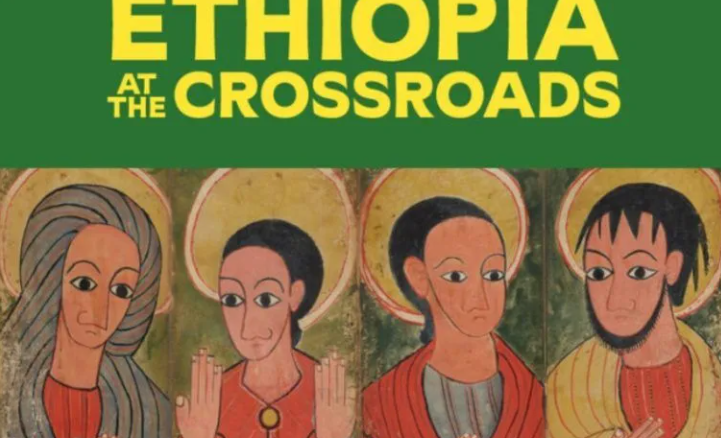Exploring Ethiopia’s Vibrant Art: ‘Ethiopia at the Crossroads’ Exhibition”
Ethiopia at the Crossroads’ at Peabody Essex Museum explores a rich tapestry of art spanning over 2,000 years. Banner Arts & Culture Presented by Cruz Companies There is a single country that can proudly assert itself as the cradle of humanity. This country today is home to more than 75 ethnicities and has the unique distinction of being the only African nation to resist colonial rule. Ethiopia has a rich history as one of the world’s oldest nations, acting as a meeting point for various cultures and religions in ancient times.
The Peabody Essex Museum in Salem proudly showcases this extensive and fascinating history. The “Ethiopia at the Crossroads” exhibition, currently on display until July 7, is part of a traveling exhibition that began at the Walters Art Museum in Baltimore and will conclude at the Toledo Museum of Art.
The exhibition features over 200 objects that span 2,000 years, showcased in five galleries. The collection includes a variety of items, such as processional crosses, ancient manuscripts, Haile Selassie’s royal cloak, and contemporary collages. The Queen of Sheba is showcased, alongside artwork from Ethiopian Jews, Muslims, and spiritualists. Religious iconography often features depictions of Jesus, Mary, and patron saints with beautiful brown skin.
These icons represent Christian art that originated in an African nation. The monarch, King Ezana of Aksum, embraced the religion in the fourth century, choosing it willingly and without any external pressure or violence. Viewers have the opportunity to appreciate art from Ethiopia as well as indulge their senses in various other ways. There are scratch-and-sniff cards that allow you to experience the scents of Berbere spices, frankincense, and manuscripts while you explore the artifacts.
You can hear the sounds of Ge‘ez, an ancient Ethiopic language, and music from an Orthodox church service resonating throughout the galleries. These captivating sounds are accompanied by educational videos that cover a wide range of topics. This show is a groundbreaking exploration of Ethiopia’s rich visual history, offering a global perspective that has never been seen before in America. Artworks from Italy, Greece, Armenia, and Coptic Egypt are displayed alongside pieces from ancient and contemporary Ethiopia, featuring renowned artists such as Julie Mehretu and Aïda Muluneh.
Objects from both medieval and modern times often reflect themes of faith and revolution. What was once considered outdated is now back in style. During a recent Zoom meeting, Christine Sciacca, the curator at the Walters Art Museum, playfully mentioned that she landed her current position by presenting the concept for the “Ethiopia” exhibition during her interview eight years ago.
The COVID-19 pandemic The exhibition was postponed due to the lockdowns. Sciacca is delighted to witness her vision materialize, thanks in large part to the support of the Ethiopian community in the D.C. area—tthe largest Ethiopian diasporic community outside Africa. She mentioned that she had her advisory committees. They consisted of community members, academics, and college students.
There were nurses, teachers, and Orthodox priests who generously shared their personal experiences with me. Sciacca also incorporated design input from community members. The exhibit was designed to incorporate the vibrant colors of the Ethiopian flag and an abundance of light, as Ethiopia holds a special significance as a symbol of illumination for them. Peabody Essex curators Lydia Peabody and Karen Kramer took into account the suggestions of community members. The exhibition showcases accents of colors from the flag against light, cream-colored walls, with shadows of church windows casting an artistic touch.
Occasionally, the gallery’s lighting can be excessive, causing certain medieval manuscripts to blend into the background. An artist whose work is impossible to overlook is Helina Metaferia, an interdisciplinary artist. Metaferia was born in Washington, D.C., to parents who immigrated from Ethiopia. During a phone call last week, Metaferia shared her personal connection to the exhibition.
She had the opportunity to intern at the Walters years ago, where she had the privilege of working with the Ethiopian art collection. Sciacca stumbled upon Metaferia’s notes while gathering pieces from the Walters collection. The artist’s father, Dr. Getachew Metaferia, was involved in the academic advisory committee for the exhibit. Our history is beautifully captured in the artwork.
She expressed her hope that people would gain a deeper appreciation for Ethiopian culture. It would be great to see more exhibitions, as there are many talented artists who deserve this opportunity, and curators deserve to receive such positive feedback.




Comments
Post a Comment